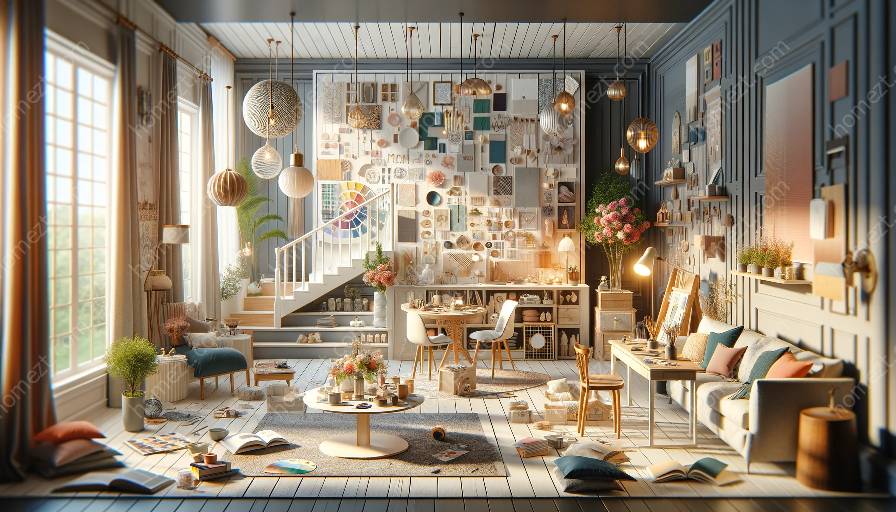Storytelling plays a crucial role in driving compelling design concepts and is closely integrated with mood boards and interior design. It brings depth and meaning to the creative process, shaping the narrative behind the design. This article explores the impact of storytelling in design concepts, its compatibility with mood boards, and its significance in interior design and styling.
The Power of Storytelling in Design Concepts
Storytelling is a powerful tool for designers to communicate the inspiration, thought process, and intended message behind their design concepts. By weaving a narrative, designers can evoke emotions, engage audiences, and create a connection with the end-users. Storytelling adds a layer of personality and authenticity to design concepts, making them more relatable and impactful.
Integration with Mood Boards
Mood boards serve as visual representations of the design concept's story. They encapsulate the envisioned atmosphere, colors, textures, and materials, aligning with the narrative and emotional context. Storytelling guides the selection and arrangement of elements within mood boards, ensuring that they resonate with the intended message. Mood boards become a visual storytelling tool, conveying the essence of the design concept in a compelling and coherent way.
Enhancing Interior Design and Styling
Storytelling is central to creating a cohesive and immersive interior design experience. It influences spatial planning, furniture selection, and decorative elements, shaping a harmonious environment that reflects the design concept's narrative. By integrating storytelling with styling, designers can curate spaces that evoke specific moods and emotions, leaving a lasting impression on occupants.
The Art of Evoking Emotions
Design concepts that incorporate storytelling have the potential to evoke a wide range of emotions, thereby creating memorable and meaningful experiences. Whether it's a nostalgic touch, an aspirational journey, or a whimsical narrative, storytelling allows designers to infuse their concepts with emotional depth, captivating the audience and leaving a lasting impression.
Fostering Personal Connections
Storytelling fosters personal connections between the design concept and its audience. It allows viewers to understand the context, inspiration, and underlying meaning, forging a deeper appreciation for the design. This connection transcends the physical attributes of the design, resonating on an emotional level and establishing a memorable and enduring impact.
Transforming Concepts into Experiences
Storytelling transforms design concepts into immersive experiences. By crafting narratives that engage the senses and emotions, designers can elevate their concepts beyond mere visual appeal. Whether it's a residential interior or a commercial space, storytelling infuses the design with a sense of purpose, creating environments that communicate and resonate with their intended audience.
Final Thoughts
Storytelling is an indispensable component of compelling design concepts, enriching them with narrative depth, emotional resonance, and authentic connections. It seamlessly integrates with mood boards and interior design, elevating the creative process and shaping experiences that leave a lasting impression. By embracing storytelling, designers can imbue their concepts with meaning, purpose, and compelling narratives.


























